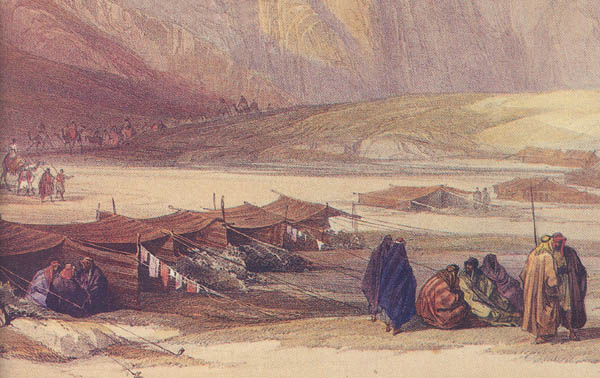Image Details

The Library of Congress
A Bedouin caravan snakes its them way into camp below the jagged peaks of Jebel Serbal—one of several candidates for biblical Mt. Sinai—in Encampment of the Aulad-Sa’id, a hand-colored lithograph from David Roberts’ The Holy Land (1842). Drawn from life, the scene impressed Roberts as “quite patriarchal in its character.” For Roberts it “carried the mind back to the times when men were hunters, and shepherds in the field, and dwellers in tents.” The patriarchal character of the Bedouin way of life can, as author Clinton Bailey observes, help us understand some puzzling episodes in the Bible.
